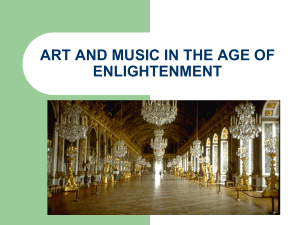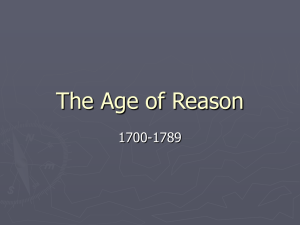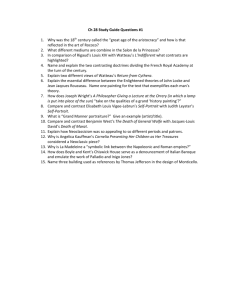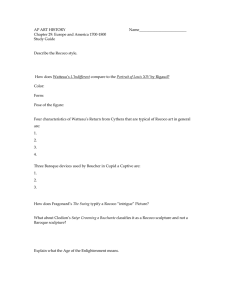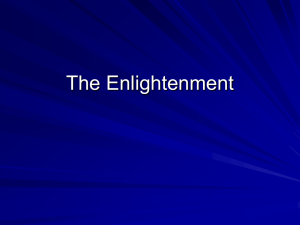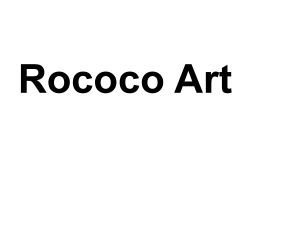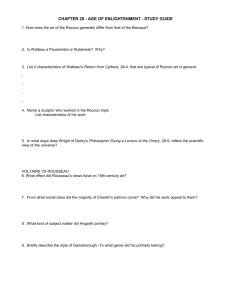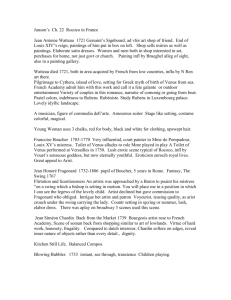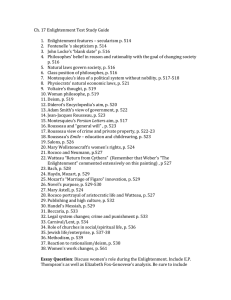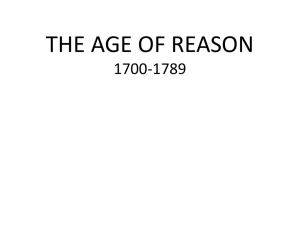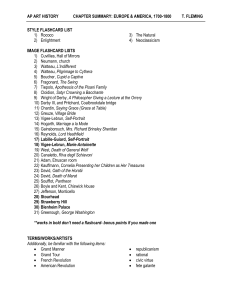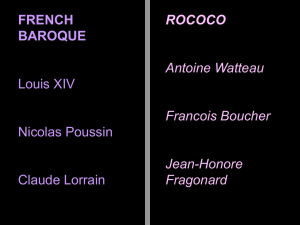questions
advertisement
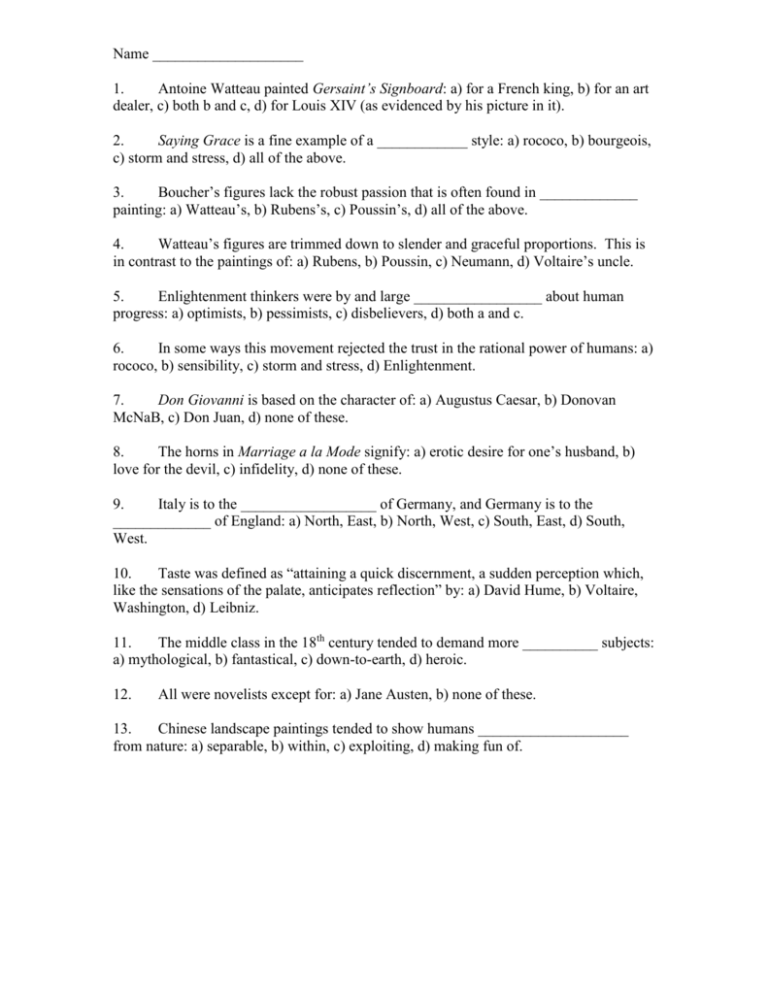
Name ____________________ 1. Antoine Watteau painted Gersaint’s Signboard: a) for a French king, b) for an art dealer, c) both b and c, d) for Louis XIV (as evidenced by his picture in it). 2. Saying Grace is a fine example of a ____________ style: a) rococo, b) bourgeois, c) storm and stress, d) all of the above. 3. Boucher’s figures lack the robust passion that is often found in _____________ painting: a) Watteau’s, b) Rubens’s, c) Poussin’s, d) all of the above. 4. Watteau’s figures are trimmed down to slender and graceful proportions. This is in contrast to the paintings of: a) Rubens, b) Poussin, c) Neumann, d) Voltaire’s uncle. 5. Enlightenment thinkers were by and large _________________ about human progress: a) optimists, b) pessimists, c) disbelievers, d) both a and c. 6. In some ways this movement rejected the trust in the rational power of humans: a) rococo, b) sensibility, c) storm and stress, d) Enlightenment. 7. Don Giovanni is based on the character of: a) Augustus Caesar, b) Donovan McNaB, c) Don Juan, d) none of these. 8. The horns in Marriage a la Mode signify: a) erotic desire for one’s husband, b) love for the devil, c) infidelity, d) none of these. 9. Italy is to the __________________ of Germany, and Germany is to the _____________ of England: a) North, East, b) North, West, c) South, East, d) South, West. 10. Taste was defined as “attaining a quick discernment, a sudden perception which, like the sensations of the palate, anticipates reflection” by: a) David Hume, b) Voltaire, Washington, d) Leibniz. 11. The middle class in the 18th century tended to demand more __________ subjects: a) mythological, b) fantastical, c) down-to-earth, d) heroic. 12. All were novelists except for: a) Jane Austen, b) none of these. 13. Chinese landscape paintings tended to show humans ____________________ from nature: a) separable, b) within, c) exploiting, d) making fun of.
